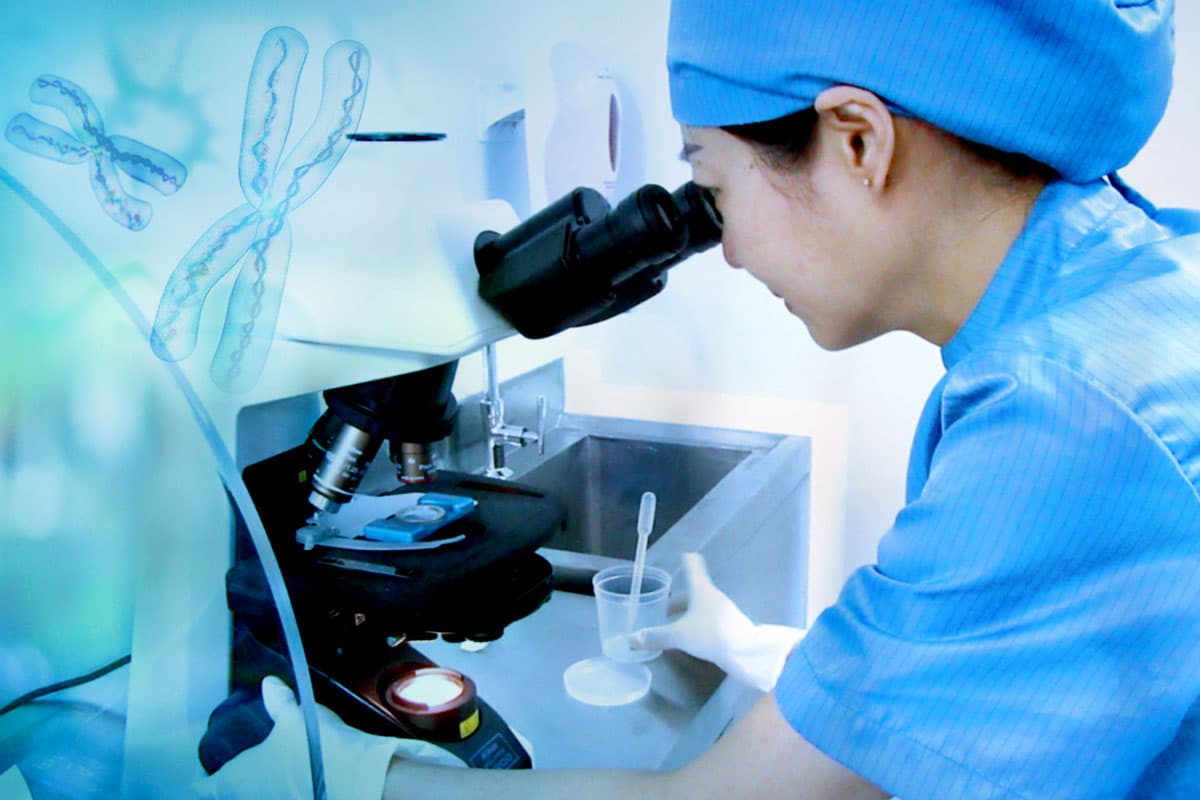
PGT at Vejthani Hospital’s VFC Center in Bangkok, Thailand
Preimplantation genetic testing (PGT) is a groundbreaking technique in embryo diagnosis that detects genetic diseases. As a leading PGT clinic in Bangkok, VFC Center at Vejthani Hospital specializes in this advanced procedure, which involves an examination of the abnormalities of the embryo. This ensures that couples undergoing IVF can take a proactive approach to prevent hereditary conditions like thalassemia from being passed down to their child.
Types of PGT Available in Thailand
PGT-A, PGT-M, and PGT-SR are the three embryo testing types performed at our clinic in Bangkok, Thailand.
PGT-A Testing
PGT-A (Preimplantation Genetic Testing for Aneuploidies) tests for abnormalities in the number of chromosomes. It helps identify embryos with the correct number of chromosomes, increasing the chances of a successful pregnancy and healthy baby.
Who can benefit from PGT-A?
- Women over the age of 35 who are at a higher risk of chromosomal abnormalities.
- Couples with a history of chromosomal disorders.
- Those with multiple unexplained miscarriages.
- Couples with a history of IVF failures.
PGT-M Testing
In our Bangkok clinic, PGT-M testing (Preimplantation Genetic Testing for Monogenic Disorders) tests for specific genetic disorders that may be inherited from either parent. This type of testing is crucial for identifying embryos at risk of diseases like thalassemia or cystic fibrosis.
Who can benefit from PGT-M?
- Couples with a known family history of specific genetic disorders.
- Individuals who are carriers of genetic diseases.
- Couples who have had a previous child affected by a genetic condition.
PGT-SR Testing
In Thailand, PGT-SR testing (Preimplantation Genetic Testing for Structural Rearrangements) identifies structural changes in the chromosomes, such as translocations or inversions, which can lead to genetic diseases or miscarriage.
Who can benefit from PGT-SR?
- Couples with known chromosomal rearrangements.
- Those with a history of recurrent miscarriages.
- Individuals with a family history of structural chromosomal abnormalities.
Who Are the Candidates for PGT?
Ideal candidates for the PGT procedure in Thailand include:
- Couples with a history of genetic disorders.
- Women over the age of 35 who are at a higher risk of chromosomal abnormalities.
- Couples who have experienced multiple unexplained miscarriages.
- Those with a family history of certain hereditary conditions like thalassemia or cystic fibrosis.
Benefits of PGT
Undergoing PGT at the VFC Center in Thailand offers substantial benefits. It helps in preventing genetic diseases in infants. It also reduces the need to terminate a pregnancy and the likelihood of congenital disabilities, which can affect the child and parents’ quality of life. At VFC Center’s PGT clinic in Bangkok, we understand that while genetic diseases cannot be cured, their impact can be significantly mitigated.
Any couple can request PGT in their IVF cycles at our clinic in Bangkok. Couples who are most likely to benefit from PGT include those with a personal or family history of chromosomal abnormalities, recurrent miscarriages, or certain types of sperm abnormalities. PGT is extremely useful where there is a 25-50% chance of having a child affected by a specific genetic disease. Through PGT, we can differentiate between affected and unaffected embryos and even identify carrier embryos, ensuring the transfer of healthy embryos.
Undergoing PGT also reveals the gender of the embryo. However, PGT for gender selection without medical indications is against the law in Thailand.
How is PGT Performed?
Our PGT clinic in Bangkok provides comprehensive consultations to help determine if PGT is the right choice for you. PGT involves a series of steps that start with the normal process of IVF, which involves retrieving eggs and fertilizing them in the lab.
At the VFC Center in Thailand, PGT is performed by extracting the embryonic cells and analyzing the embryonic genetic makeup. Embryonic cell extraction can be done at two stages: when the embryo is three or five days old. Only those embryos deemed viable are transferred to the mother’s uterus, enhancing the chances of a successful and healthy pregnancy.
The process of the PGT procedure in Thailand at the VFC Center involves:
IVF Procedure
Eggs are retrieved and fertilized with sperm in the lab.
Embryo Growth
Fertilized eggs are cultured and monitored as they develop into embryos.
Cell Biopsy
On the fifth or sixth day of development, a few cells are removed from each embryo.
Genetic Analysis
The extracted cells undergo genetic testing to detect any chromosomal or genetic abnormalities.
Embryo Selection
Healthy embryos, free from detected abnormalities, are identified.
Embryo Transfer
One or more selected embryos are transferred to the uterus for potential pregnancy.
Choose VFC Center’s PGT Clinic in Bangkok
Selecting the right PGT clinic is crucial for the success of your fertility journey. Our team of fertility specialists in Thailand is highly experienced in performing PGT and other advanced reproductive techniques.
We use the latest technology, including the EmbryoScope Plus, which allows continuous monitoring of embryo development, enhancing the accuracy of embryo selection.
We’re committed to providing quality care tailored to each patient’s needs, from initial consultation to post-procedure follow-up. Our meticulous approach ensures the highest medical and service standards, giving you the best chance of a successful and healthy pregnancy.




